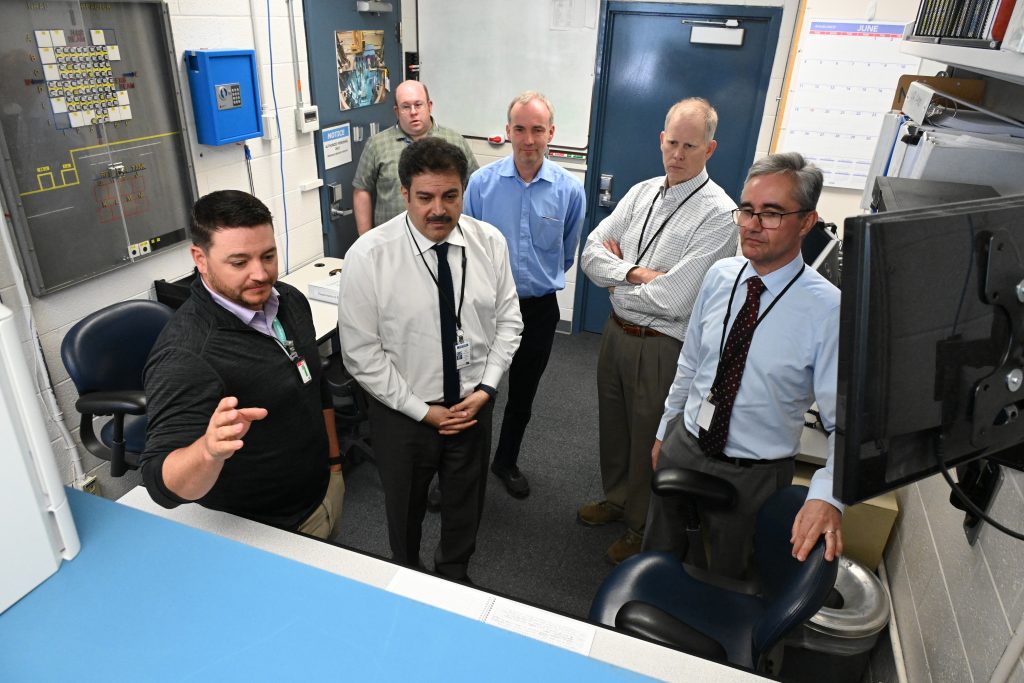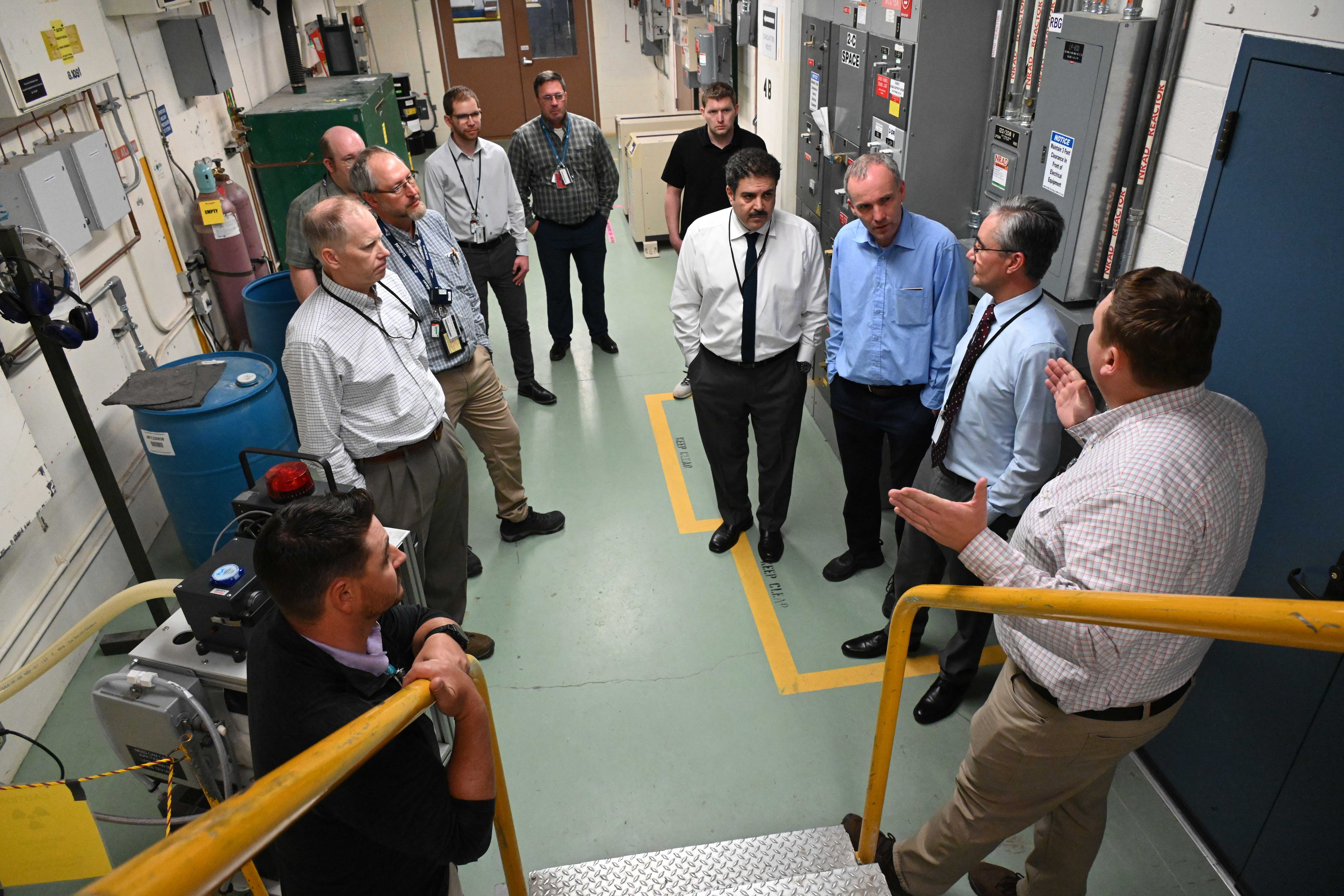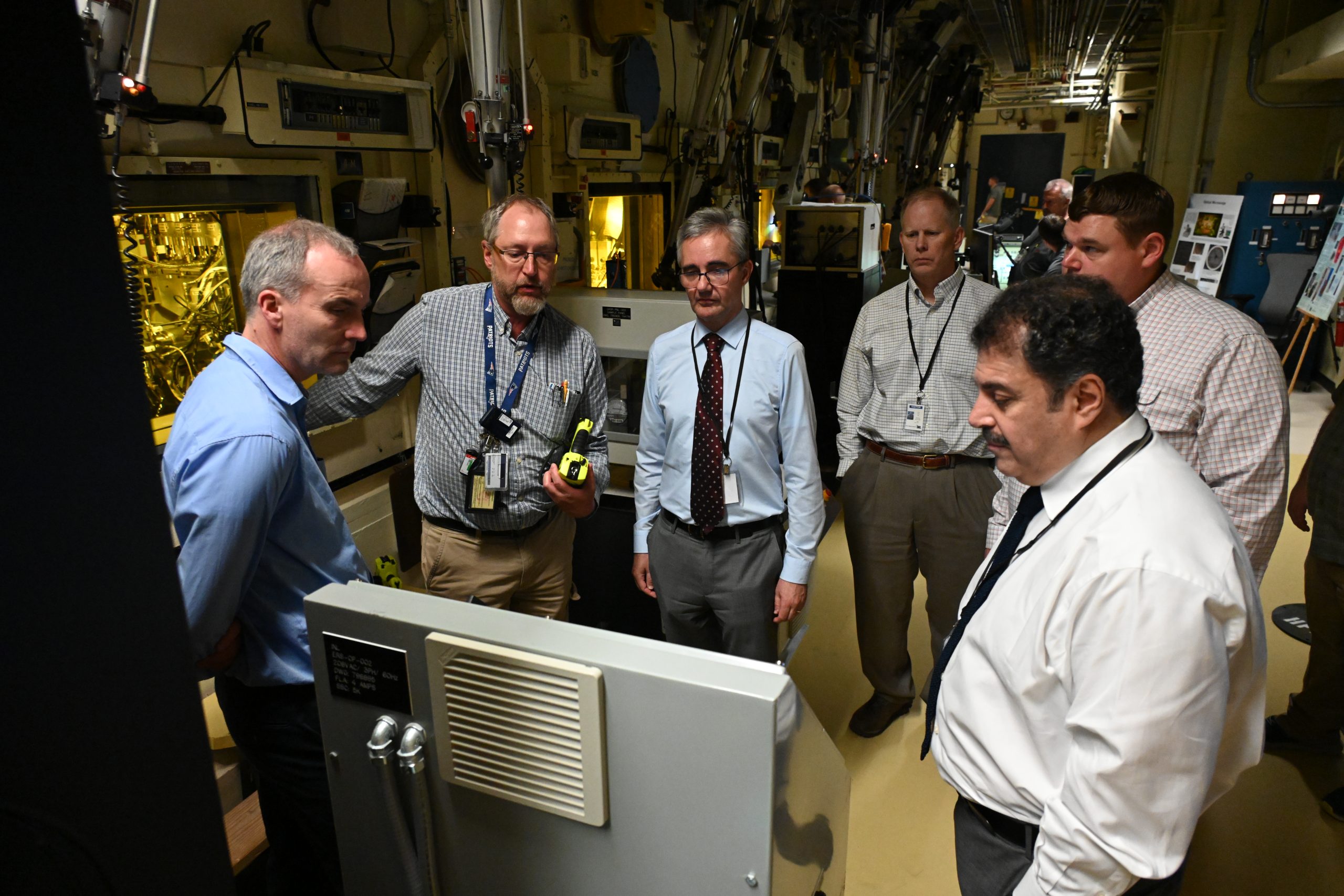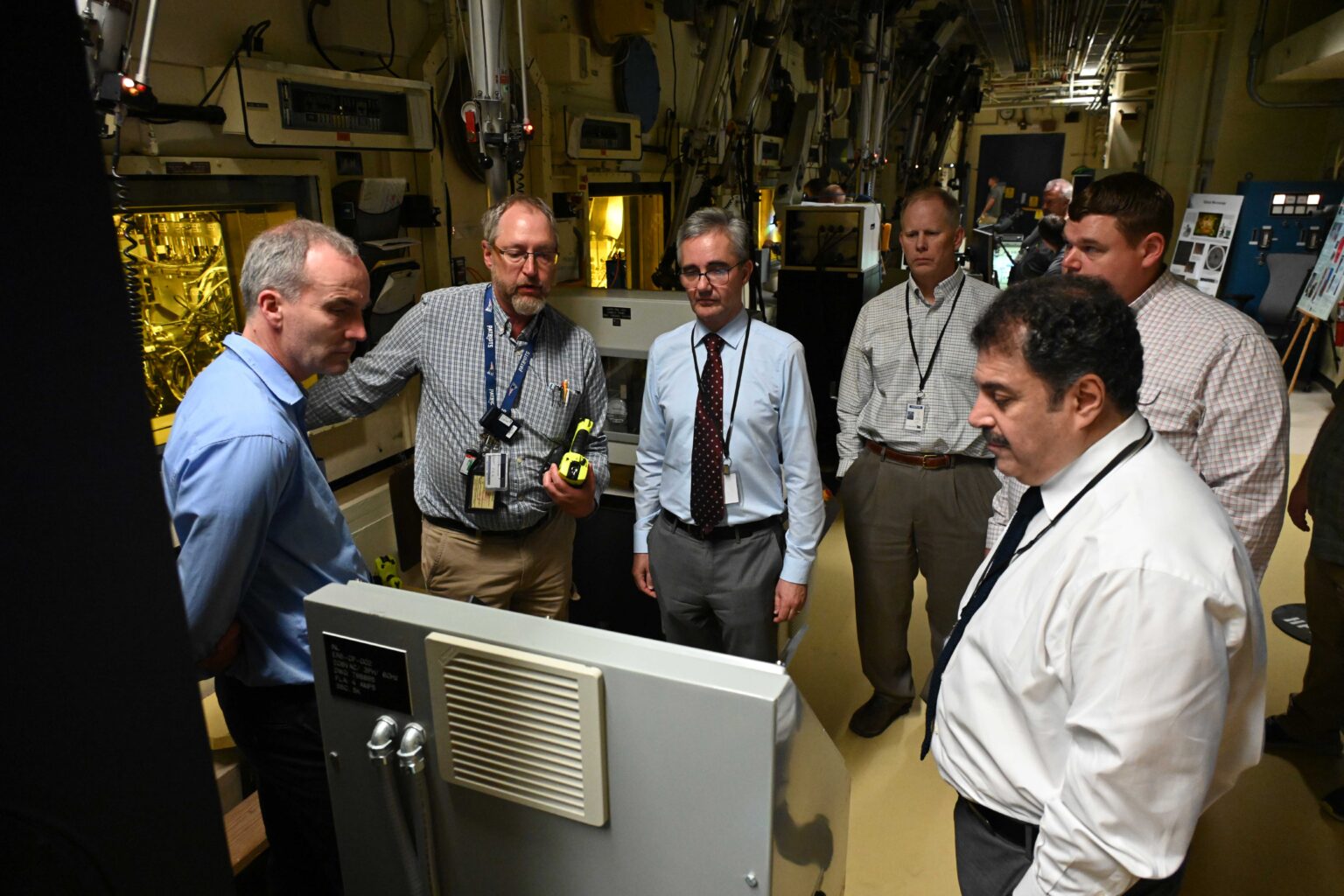In early June a group of experts from around the world gathered at Idaho National Laboratory to complete an Integrated Research Reactor Utilization Review on the Neutron Radiography Reactor (NRAD). This review of one of INL’s lesser-known reactors helps researchers and management support strategic planning for NRAD.

Neutron radiography is a technique used to study the internal structure and behavior of nuclear fuel materials. It involves using neutrons passing through a material to produce images of the fuel samples.
In traditional X-ray radiography, X-rays are beamed toward an object, and the amount that pass through is measured to create an image. However, X-rays that interact with electrons are not very effective in penetrating dense materials like metals and nuclear fuels. Neutrons, on the other hand, can penetrate deep into the material and interact with the atomic nuclei, providing valuable information about the fuel’s composition and behavior.

“NRAD’s primary mission has been to perform 2D neutron radiography with film,” said Aaron Craft, NRAD program lead. “While we intend to continue using this valuable capability at NRAD, there is so much more that NRAD can do. Because of NRAD’s unique location beneath the world’s largest inert atmosphere hot cell, these same samples can undergo neutron-based examinations using NRAD that are not possible at other facilities. For example, a neutron diffraction instrument at NRAD could routinely examine highly radioactive samples that other neutron science centers are unable to handle.”
LOOKING TO THE FUTURE
NRAD came online in 1977 and has produced cutting-edge images and research ever since. But this group of visiting experts didn’t visit the lab to discuss INL’s past. They came to look at the future. In the past decade, many components and systems have been modernized, and there are plans to continue that trend and introduce more digital imaging and other neutron-based technologies to the process.
The Integrated Research Reactor Utilization Review is a new service provided by the International Atomic Energy Agency to provide feedback for research reactors. It allows reactor teams to improve processes and plan for future capabilities with an outside perspective.
Expert members of the review team pointed out NRAD’s strengths. Ayman Hawari, distinguished professor of nuclear engineering and director of the Nuclear Reactor Program at North Carolina State University, said that most reactors they visit are not as well supported and flourishing as NRAD. “While bottlenecks exist, and we need to fix those … the people are the most important thing in a successful research reactor,” Hawari said. “[INL’s] inclusion of young scientists is one of the ingredients to success here.”

The team also suggested several improvements to ensure that NRAD continues to be a world-class source of neutron imaging and is fully immersed in the digital technology associated with the field. Many of those suggestions are already included in plans for NRAD.
Pavel Trtik, an instrument scientist from the Paul Scherrer Institute in Switzerland, observed that “imaging of highly irradiated materials regularly is not something most facilities can handle.” This places NRAD in a unique position, and with upgraded capabilities it can become even more useful to a variety of projects being undertaken at INL and elsewhere.
“In-core irradiation at NRAD and subsequent transfer into the Hot Fuel Examination Facility above allows for examination of short-lived fission products that would have decayed away by the time the sample arrives from INL’s Advanced Test Reactor,” Craft said. “Leveraging the unique co-location of HFEF and NRAD could help pioneer new frontiers of nuclear materials science that we have yet to access.”
As they left the Idaho desert, the combined expertise from the visiting team confirmed many INL researcher ideas and brought out some new ones. The visitors were able to see part of the history of nuclear research and peer into the future at the same time. The future of the NRAD reactor and the neutron imaging program at INL appears to have a future as bright as its history.





